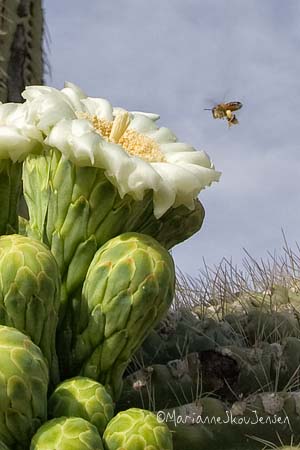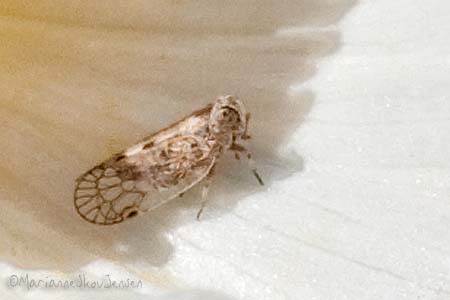Why is this bee completely covered in pollen while others carry theirs in neat little bundles on their legs? That’s what I was wondering as I was taking this guy’s photo. So, I googled and found the following answer:
“Honeybees are covered with tiny hairs all over their body, even their eyes. Pollen sticks to these hairs as the bee crawls around on a bloom . The pollen particles are moistened with nectar and are then brushed down to baskets on the hind legs. The bee will collect its weight in pollen”.
Bee gathering pollen of Brittlebush bloom
![]()
Pretty cool, huh? I love learning something new. Now I want to get a photo of a bee grooming! For other interesting bee facts, check out Buzzzonin.com


